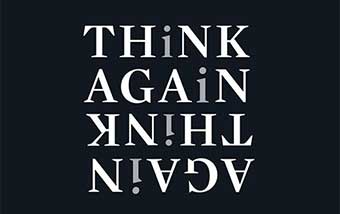Modal Consciousness
Zen Mind is described as a state of egolessness, devoid of self consciousness. One can utilize this state of mind, Zen shows us, in archery, martial arts, and calligraphy. Zen and the Art of Archery, by Eugene Herrigel, is the short classic story of a westerner’s attempt to achieve Zen Mind and become a skilled archer. During the author’s eight years of training he is continuously redirected from trying to hit the target. The arrow should release itself, you see, like a tree branch that bends to release a load of snow. One doesn’t aim. Without ego the arrow finds the target. Zen Masters blow out candles with their arrows at 80 yards, blindfolded.
The Philosophical Baby: What Children’s Minds Tell us about Truth, Love, and the Meaning of LIfe, by Alison Gopnik, reviewed by Michael Greenbergin the New York Review of Books, March 10, 2010, describes what the author has discovered about human consciousness before age 6. Children this age, she reports, have “lantern” consciousness as opposed to “spotlight” consciousness, which develops soon thereafter. In “lantern” consciousness one does not have a sense of being a self observer as one is having experience, one is just “taking it all in”, with no intentionally focused attention. This is likened to what an adult experiences watching a movie, immersed in the unfolding visual and auditory experience, with a suspended sense of self.
In “spotlight” consciousness, after age six, we develop the focused intention of the self-conscious observing self. We direct our ‘show’. We have a sense of me looking to see what I seek to see. We have ego, filtering and directing our experience.
As adults we seem to be able to do both “lantern” and “spotlight” consciousness. This is empowering, and maddening. Zen shows us that suspending “spotlight” for “lantern” consciousness can take some effort and training – it doesn’t seem natural – but it can be quite beneficial for perceptual and motor tasks. Having unattached attention, any golf professional will tell you, refines skill and improves ability to perform body kinesthetic and hand-eye movements.
“Lantern” consciousness seems more like animal consciousness. “Spotlight” consciousness may be uniquely human. Why did it evolve? Perhaps “spotlight” consciousness is for social living. Having me at the center of my perception may be very important for negotiating the interpersonal landscape. The social environment is every bit as perilous for humans as the predator environment is for animals. Human survival depends on successful membership in groups.
“Lantern” consciousness may be more effective for acts in the natural world. Animals hunt, move, and fight very well.
This duality can be maddening. Our consciousness can shift. This is not fully manageable. We choke in sports, freeze on stage, lose our golf swing, suddenly forget what we were going to say.


